23 amazing scientific discoveries found trapped in ice
Science
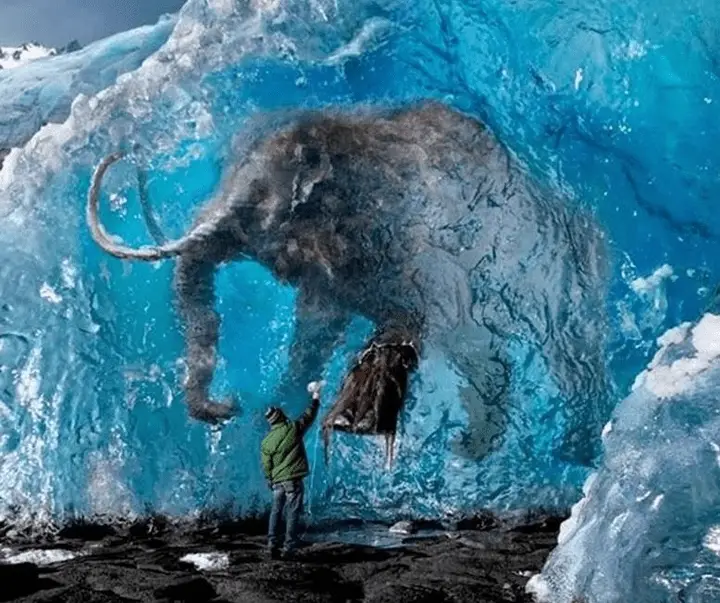
1. Woolly mammoth
Pinterest
Scientists have found many things buried in the ice. Some of these things are stranger than others. And some of them are so bizarre as to baffle the mind. While many of these findings are the typical woolly creature, primed and ready for the arctic environment, others are inexplicably weird. Here are a few of the more choice, mysterious, and enthralling findings scientists and the like have found in the icy worlds of the deep north and south. Prepare yourself.
Among the more normal things scientists have found in ice is the woolly mammoth. This prehistoric woolly beast roamed the lands of the arctic in places like Alaska and Siberia. One particular mammoth specimen was recently resurrected from an ice tomb in Siberia. It was dated at around 39,000 years old.
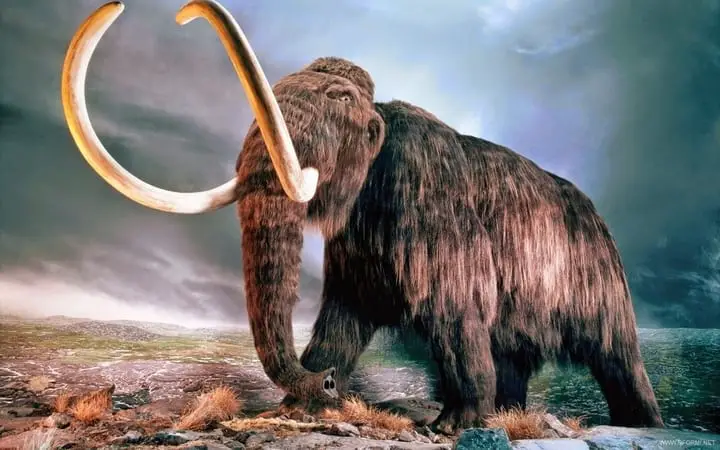
Farissubekti13
So well conserved was this specimen, in fact, that scientists consider it one of the most finely preserved ever. And where, exactly, did scientists find it? The Novosibirsk islands, an archipelago in Northern Russia. Amazingly, this fossil was found with blood and muscle tissue in tact, tantalizing scientists with the possibility of cloning.
2. Ancient bacteria
Of the weirder findings scientists have found in ice has been old bacteria. Some recent specimens, for instance, have been dated back to around a quarter million years old. A different little chunk of bacteria-riddled ice was dated at around 8 million-years-old. That’s pretty old.
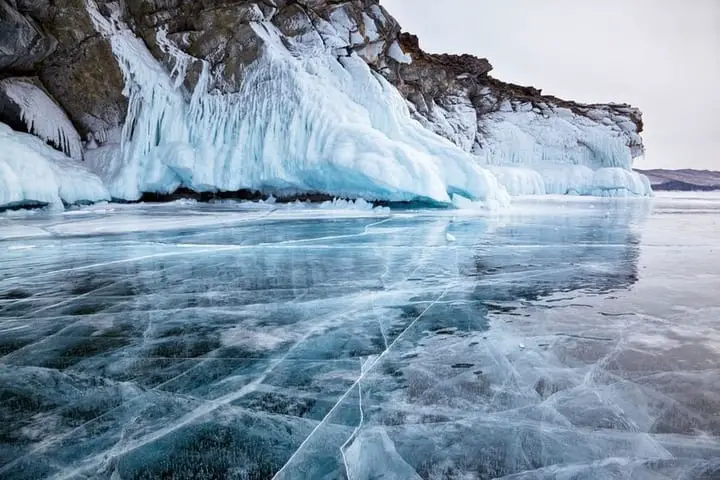
Mother Nature Network
It’s only a certain type of bacteria that can survive these arctic cold conditions, however. In order for a bacteria to bear this breed of cold, for instance, it must be able to form spores. These spores are essentially a form of hibernation. And this hibernation, in turn, renders them essentially impervious to the external conditions in which they find themselves.
3. More ancient bacteria
There are other types of bacteria, however, latent in the ice that are far more dangerous. Sometimes they’re carried in the bodies of dead animals, but sometimes they exist all on their own. Is there anything favorable about these ancient forms of bacteria? The answer is no—they’re bad news. Whereas with modern bacteria we’ve developed immunity, these old ones we’ve had no exposure to.
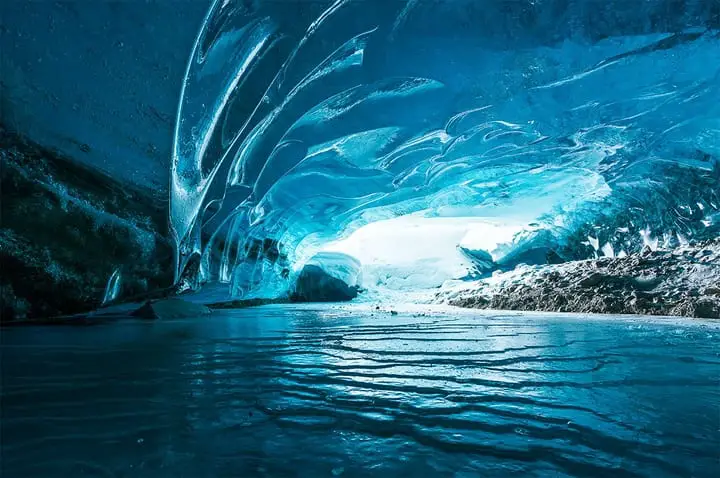
James Brandon Photography
In the arctic peninsula of Siberia, for instance, there have been cases of anthrax that have re-emerged, devastating several small towns of northern Russia. Other bacteria potentially latent in the arctic permafrost are things like bubonic plague. We need to be on the look-out, then, for some of the smaller things that emerge as the ice melts.
4. Otzi Man
Otzi Man is one of the more famous humans to have been found in the snow. About 5,300 years old, this well-preserved body was found in the Alps between Austria and Italy. One of the more amazing details about the Otzi man is that he’s a genetic ancestor to many people in the nearby Austria area.

PicLoad
One of the less palatable facts about the Otzi man is the number of diseases he acquired. Among the litany are things like gum disease, gallstones, worn joints, hardened arteries, lyme disease, and parasitic worms. He also had an arrow embedded in his shoulder and appears to have died from a blow to the skull. Bummer, Mr. Otzi Man.
5. Woolly rhino
Animals with abundant fur are common to areas of extreme cold. And that’s why we used to have the woolly rhino. One recent specimen was found so well-preserved that it came fur covering all parts of its body that weren’t gnawed on by predators. This particular rhino was thought to be around 18-months-old.
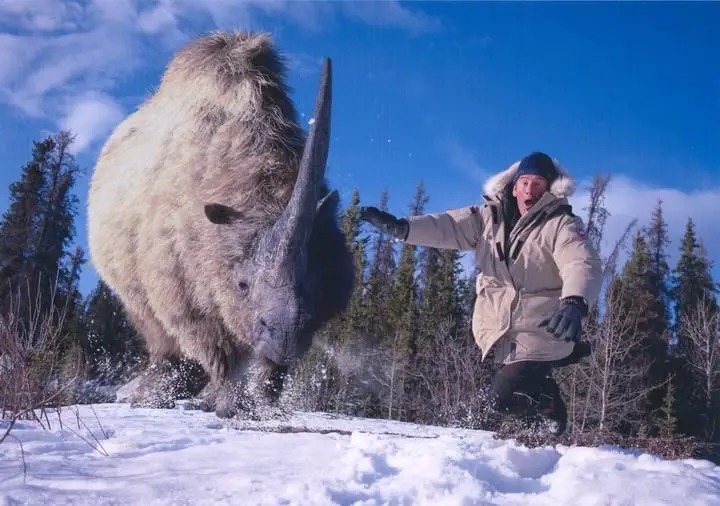
DigiZone
It was found in Sakha, Russia—one of the coldest regions in northern Russia. The last of this species was thought to have died out around 10,000 years ago. Finding it, then, can yield clues about the animals that lived at the time, the ways in which they lived, and even the habits they had.
6. Sabretooth tigers
Also called cave lions, these tigers roamed much of the arctic circle. Some Russian scientists recently found some unique specimens in Yakutia, Siberia. Like the woolly rhino, these specimens were cubs. And, also like the woolly rhino, these were so well-preserved that they still had fur.
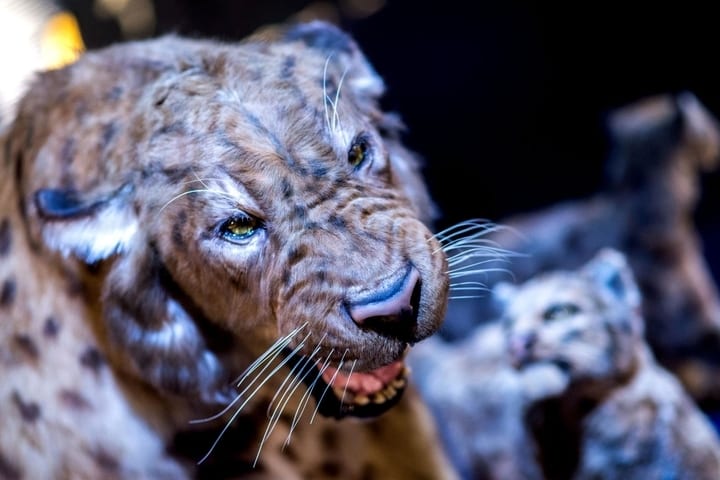
National Geographic
Like other species of the last ice age, these sabretooth tigers died out around 10,000 years ago. Scientists hypothesize that this was due to some mixture of global heating and human hunting. Another specimen was found off the coast of the UK, weighing in around 881 lbs. From these same icy waters scientists have recovered mastodons and other creatures from the ice age times.
7. The White War
Among the more strange things we’ve found in the ice is the remnants of wars’ past. During WWI, for instance, certain battles were fought high up in the Alps. This icy trench warfare was essentially the worst way in which to fight a war. Frigid temperatures left many soldiers frost bitten and many others even worse.
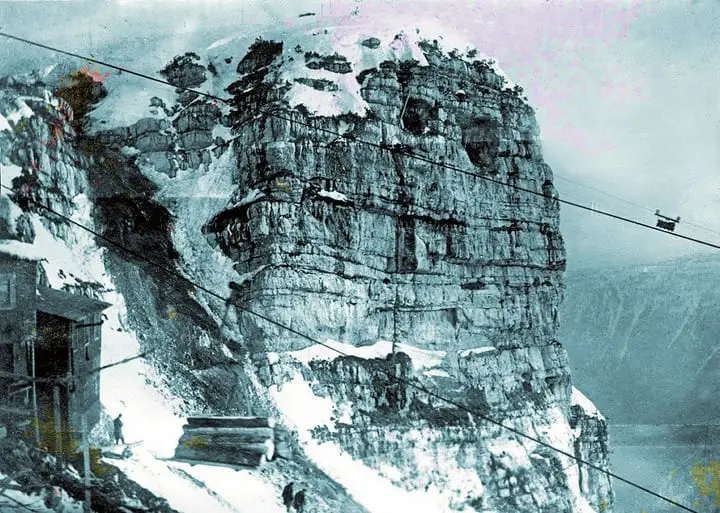
Roads to the Great War
Many of the people who fought in these conditions, for instance, didn’t die from the actual battle but instead from the blistering cold. And, once submerged into these ugly, freezing temperatures, the bodies succumbed to the same fate as all else: freezing and preservation. But, believe it or not, scientists have found much stranger than this.
8. Atlatl darts
Among other fascinating items that scientists have been finding is the ancient weaponry of humans. One of these weapons is the atlatl (pronounced at-latel). The atlatl was one of the first forms of weaponry made by anatomically modern humans. It preceded, for instance, the bow and arrow.
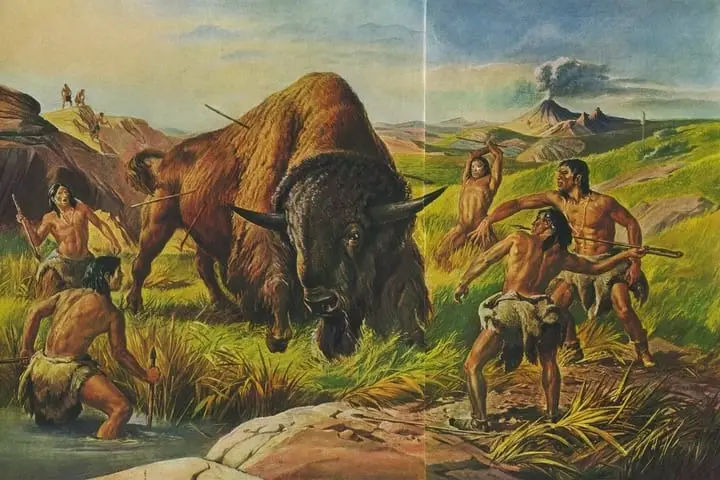
Twipa
The weapon consisted of a handle with a notch at the end that would hold a four- to six-foot-long spear. Most of these atlatl’s were customized for the individual, carved into ornate structures. What was great about the atlatl as a weapon is that it would allow the spear to travel farther and with more accuracy than had it been thrown by itself.
9. Glacial and ice patch archeology
In response to the effects of global warming, emerging fields of science have been flourishing. Of these few disciplines are glacial and ice patch archaeology. Both of these fields are oriented toward studying the remnants found in receding glaciers, permafrost, and ice patches.
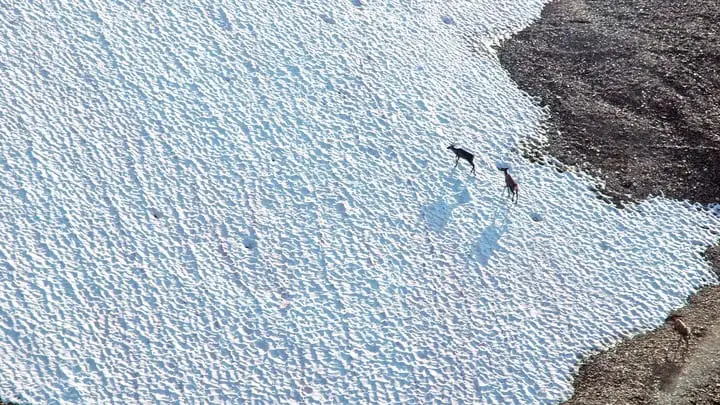
Yamoria Virtual Companion Exhibit
Since global warming is accelerating the rate at which this melting occurs, there are ample new findings for these scientists to study. And beyond that, the scientists are grouping together to find and exam these materials before they’re subjected to the plight of weathering. These are the scientists that are finding us all of these mysterious things.
10. Vikings
Another of the more interesting things that scientists have found is the trace of Vikings. In Juvfonna, Norway, for instance, scientists have found Viking gear within several glaciers. Among the mostly reindeer-manufactured gear, they also found sticks, bows and arrows, and the leather parts of shoes.

International Business Times
Most of the materials they found were ascertained to be somewhere around 3,400-years-old. Among the more interesting gear they found were reindeer traps. These consisted of bound sticks that would be shaken to make noise. This noise would be used to round the reindeer into a small group to be captured. Crafty work, Vikings.
11. Planes on ice
Of the other odd things scientists have found in ice is crashed technology. While not ancient, this tech is definitely a surprise. Long presumed lost, sometimes these things have a way of being found again. In 1952, for instance, a military plane bound for Anchorage, Alaska came up a little bit short, crashing into a nearby glacier.
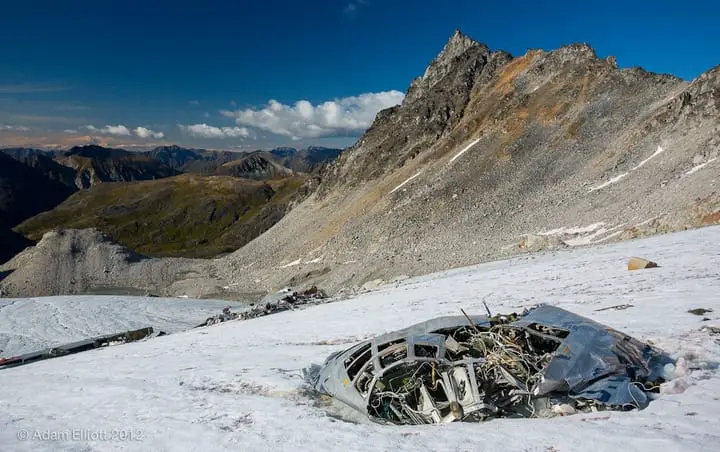
Ghost Hunting Theories
The crash killed 41 passengers and 11 crew members. But because the conditions were so unsafe (as it goes with glaciers), police and rescue workers couldn’t retrieve any of the wreckage. It took another 50 years of melting for the glacier to recede enough for a salvage mission to ensue.
12. ‘Bloody’ ice
Mysterious things happen in Antarctica. One of the weirder of these is this blood-red stream that flows from the appropriately named Blood Falls glacier. This spooky flow looks like blood but, in reality, it’s just a bunch of iron-rich water. It’s the same element, in other words, that keeps Mars its characteristic red.
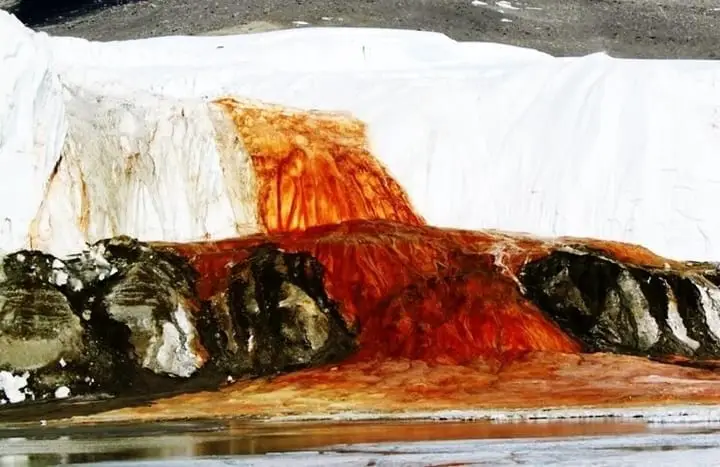
Steemit
It’s not 100 percent clear where this iron is coming from, but it is quite the site. Despite its demonic appearances, though, this water isn’t something out of some cheesy, horrible B movie. Instead, it’s just the peculiar result of geology mixing with oceanography with a tad bit of glaciology.
13. Old forests
As glaciers advance, they essentially crush everything in their way. But, also, as they move they pick up rocks and debris. Scientists call this sediment moraine. This moraine can act as a cushion for some of the stuff that the glacier would otherwise crush. And this is the case for certain old forests.
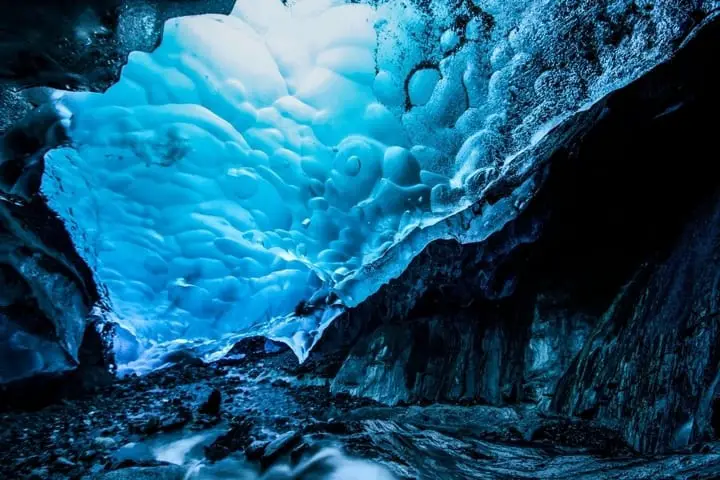
Off The Beaten Path Travel Blog
Instead of uprooting the trees and destroying the forest as the glacier travels, the moraine enables a layer of non-abrasive (or at least not-as-abrasive) material to cushion the move. The forest left beneath, then, still exists. In some places, you find entire forests when these glaciers recede.
14. Human sacrifice
In Chile, some things were found in the ice that were a little more disconcerting that most. These things were Inca sacrifices. It was ritual, for instance, for the Inca to sacrifice children and other unfortunate souls to the highest peaks of the Andes Mountains. Such traditions aren’t uncommon to the societies of our past.
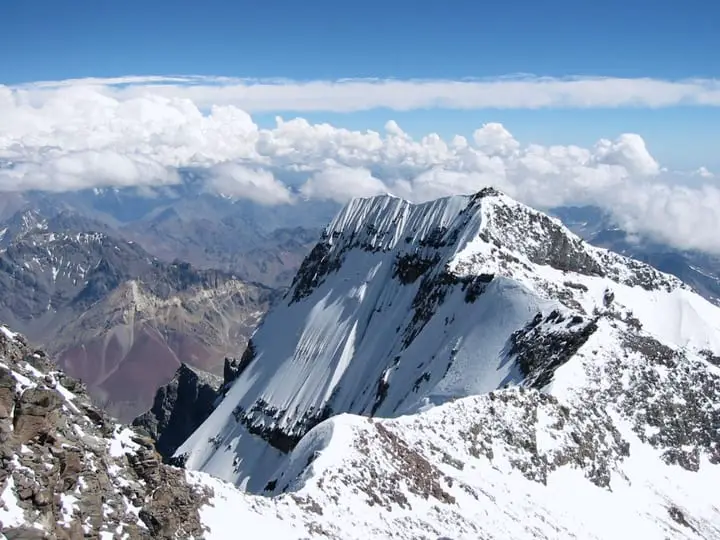
Mendoza Informa
The Incas thought such sacrifices would bring them rain, better crops, and protection. The highest of these peaks is around 15,000 feet. And, so far, in these deep mountains they have found around 115 different burial sites. In 1954, for instance, they found the body of one young sacrifice they named “Juanita.”
15. Human sacrifice: part II
Like other societies of the time, the Inca were fond of human sacrifice. During rituals that paid homage to the Sun God Inti, they thought they had to go to extremes—in this case extreme heights and cold—to appease. They didn’t test their hypotheses by not sacrificing the children to see what happens.

YouTube
Subsequently, the severe cold enabled the pristine preservation of these sacrifices. One particular boy, for instance, was found so well-preserved that scientists could determine his blood type (type O), age (around eight or nine), and status (upper class) within the society. And so it goes with glacial preservation.
16. How ice preserves
How can ice preserve all of these materials so well, you ask? Because the frigid cold prevents bacteria and other decomposers from working their magic. In environments like the arctic, for instance, it is so cold and deprived of oxygen that bacterial decomposers can’t function. Or if they do function, they don’t at the same rate as if there were in a warmer climate.
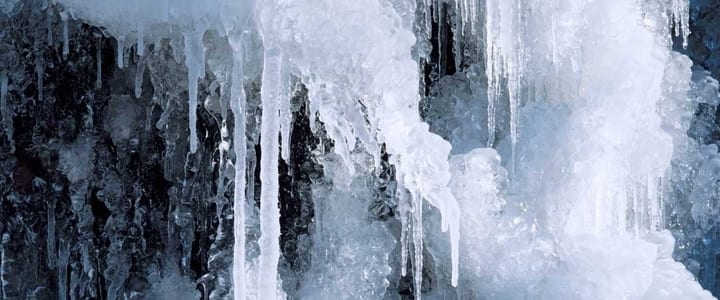
Think Tank Home
Because they can’t function, the artifacts, whatever they are, don’t break down. This is what leads scientists to the amazingly well-preserved bodies of these sacrifices, these ancient woolly creatures, and all else they find in the mountainous and cold regions of the deep north and south.
17. Other people found in ice
While disconcerting, Otzi man and the Inca sacrifices were not the only people found in ice. In fact, there have been many, many people who have suffered similar fates. Recently, for instance, scientists found a body about 300 years old. What’s amazing about this body is that he was an ancestor to the nearby First Nations people.
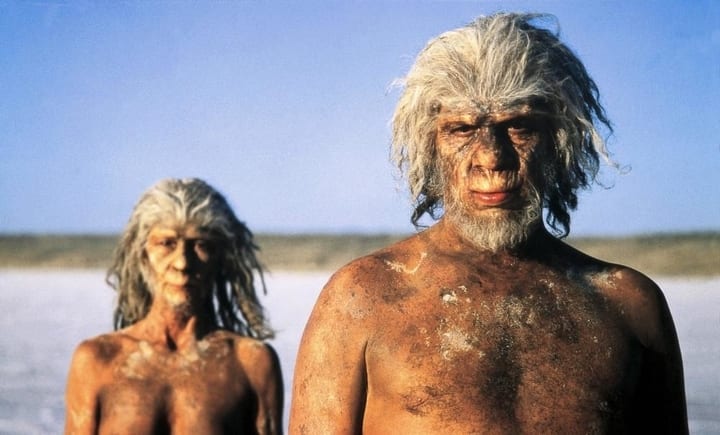
KeyWordHungry
The name they decided to give this body was “Long Ago Man.” Found with a robe made from the skins of ninety-five pelts, a walking stick, fur coat, and scales of a fish in his pockets, this man is thought to have been well-off. Bad luck for him: he was one of the many to have lost his life after having fallen into the glacier.
18. Global warming
A lot of these finds are made possible by the relentlessly shifting climate. As the atmosphere warms, for instance, the rate at which snow melts and permafrost fade accelerates to a point at which more is lost than gained. This means that bodies and other elements previously buried will be unearthed (un-iced?) and left to wear in the elements.
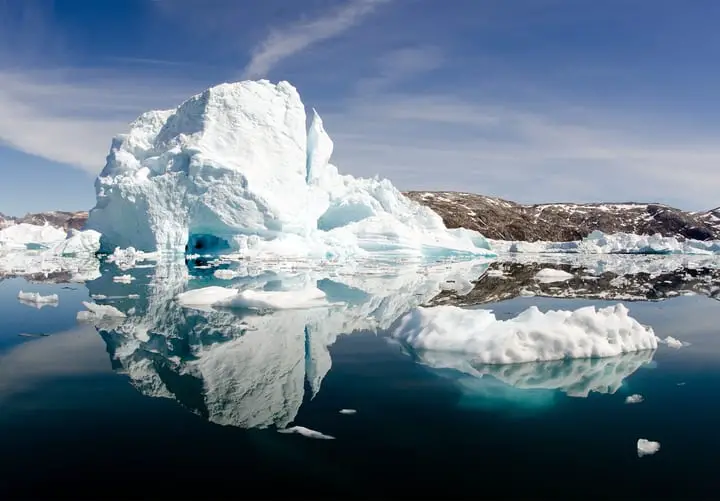
National Geographic
While this warming of the climate is definitively bad, it does afford us the ability to study some of these ancient and prehistoric creatures. While the trade-off is certainly disproportionately unfavorable, it is sometimes fruitful to look for the good in the terrible.
19. Ice patches
Some of the places that are experiencing a particularly accelerated rate of deterioration are the arctic ice patches. These form when snow aggregates and doesn’t melt from the year prior. As these preserved layers build, you get an ice patch. Essentially, you develop a layer of ice that is normally covered in snow and it doesn’t get the chance to melt.
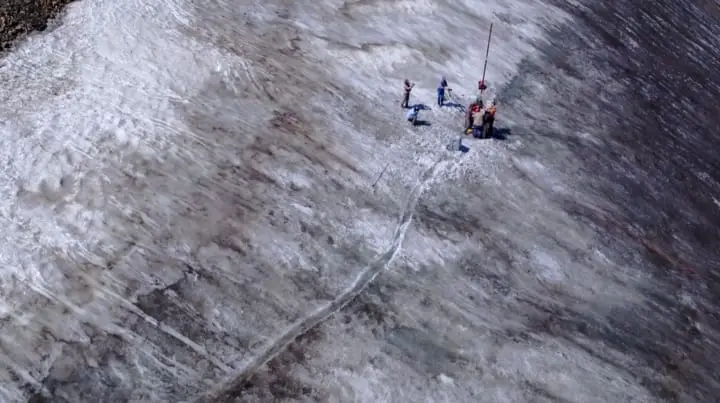
GlacierHub
Animals often hang out on these patches. If they die, then, they will sometimes be solidified on the layer. More often, though, it’s the stuff that these animals leave behind that the scientists find. The pioneer to begin studying these patches was Tom Andrews. He rounded up enough money to fund their in places like Alaska and the Canadian Arctic.
20. Caribou droppings!
One of the more consistent findings in these ice patches is animal excrement. While that may not sound too exciting, animal waste reveals all sorts of things about the animal and its habits. And this, in turn, tells us about how the animal lived all those years ago. You can learn whether the animal was herbivorous or carnivorous, for instance.
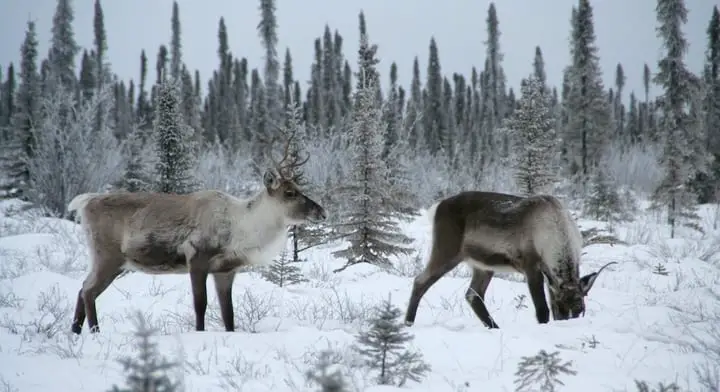
Naturally North Idaho
Caribou droppings, for instance, can inform us as to what the animal ate, where it ate it, and where it got that food. If the source of food wasn’t nearby, say, we can infer that the animal had a grazing territory of however-many miles. In some cases, however, we can learn about things other than the animal itself.
21. Dart shaft
In one instance, for example, scientists found a dart shaft in the poop of one of these caribou. While it may sound gross, it’s also deeply informative. What does it is reveal? Well, for one, it says that there were hunters in the area. Secondly, it implies that these hunters were some level of craftsman.
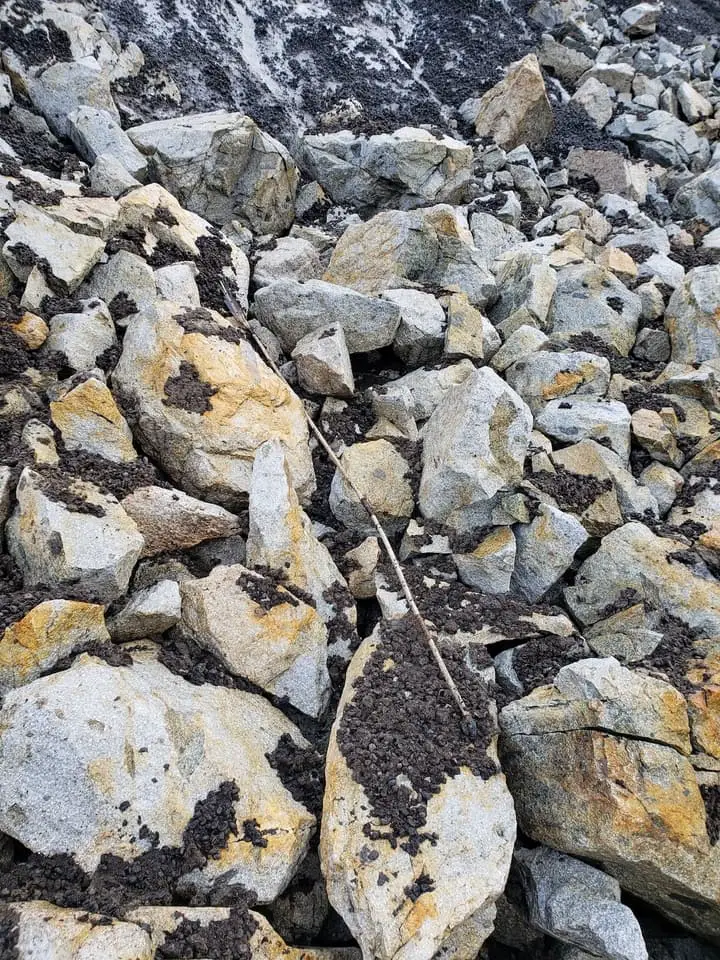
The History Blog
Ultimately, finding things in animal poop can be very information. They can tell us everything from where the animal roams to what other animals are in the area. Scientists, then, have to get over poop-phobia if they anticipate taking to the ice patch for discovery.
22. Spears
Other human implements have been found in the wake of these wasting ice patches. In Yellowstone, for instance, an area where scientists previously found no sign of humans, scientists found a 10,300 year-old spear. That’s very old, in case you didn’t know, for human standards.
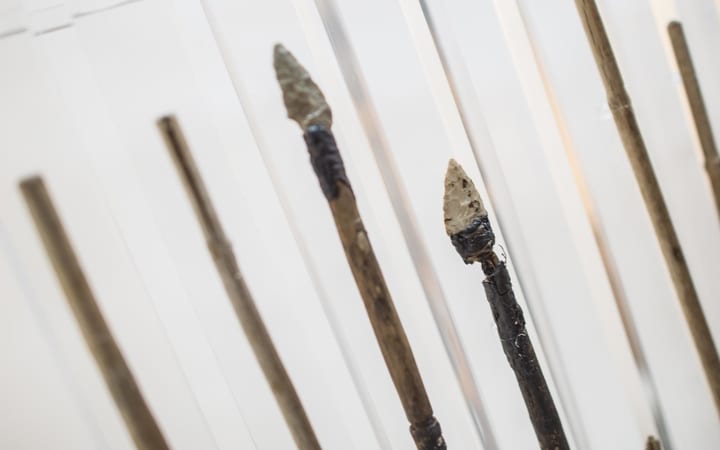
IceMan
As expected, this spear was used to hunt and kill the fauna of the time. In Yellowstone, that means things like bison and elk—maybe the occasional wolf. The most important bit about this finding, though, is what it reveals about the human presence. There were humans, in other words, in this cold Idaho, Wyoming, and Montana climate.
23. Willow bow
Another weapon scientists have found in these receding ice patches is the willow bow. Carved from the willow tree, this bow was used to kill and hunt elk and reindeer. One particular bow was found to be 340 years old. This bow specifically was actually one of the first artifacts found by ice patch archeologist Tom Andrews.
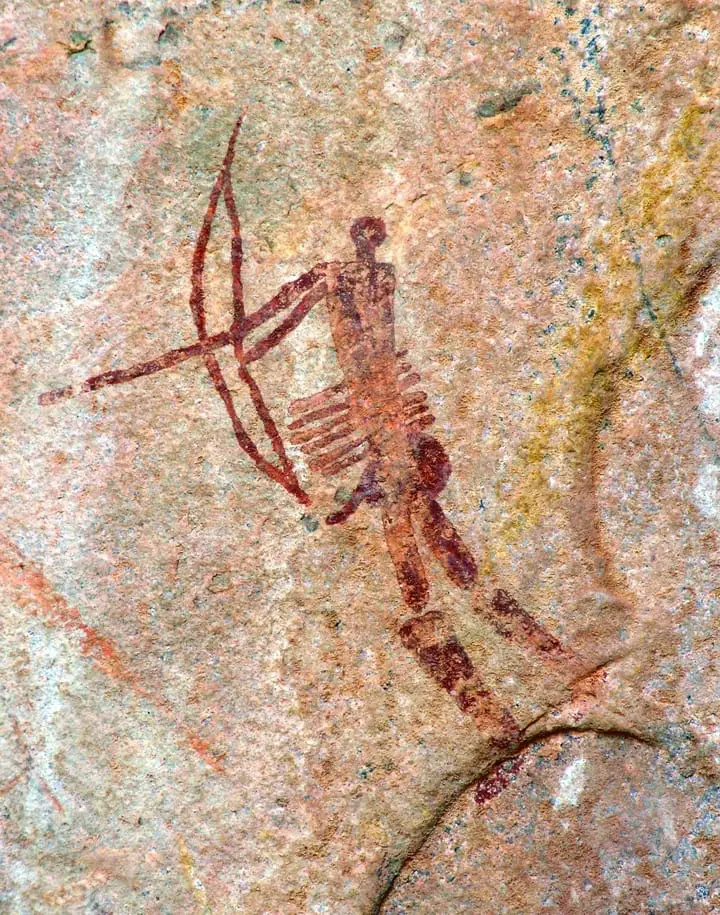
Pinterest
To find the bow, Andrews had to first raise money for the expedition. At first, this entailed rallying support from the local and national funders. Second, it entailed gathering aerial photos of the mostly-inaccessible ice patches. Lastly, it involved helicopter travel to the sites that were deemed fruitful.
24. Copper arrowhead
Other weapons, you ask? Why yes, there’s more. This copper arrowhead, for instance, was found within one of these ice patches. And what’s astounding about a copper arrowhead? It suggests that the ancient culture in question understood metallurgy. This suggests loads about the modernity of the society that made it.
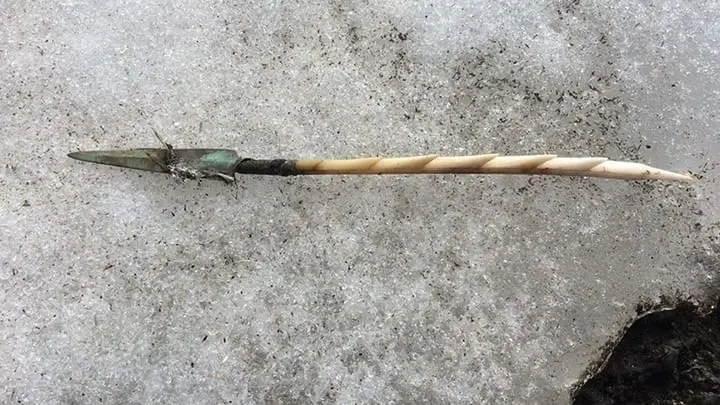
International Business Times
But even more interestingly, this arrowhead was barbed and manufactured like modern-day fishhooks. It was, in other words, ready and primed for efficient hunting. This style of weaponry tells us that the society had relatively advanced technology for time. While they didn’t have laptops and iPads, they at least had barbed spearheads.
25. Mammoth brains
One of the weirder things these scientists have found in ice is the brains of a woolly mammoth. Now, these weren’t brains you’d want to eat (I know what you were thinking). This mammoth, however, was not found in an ice patch but instead some derelict permafrost of the Laptev Sea coast.
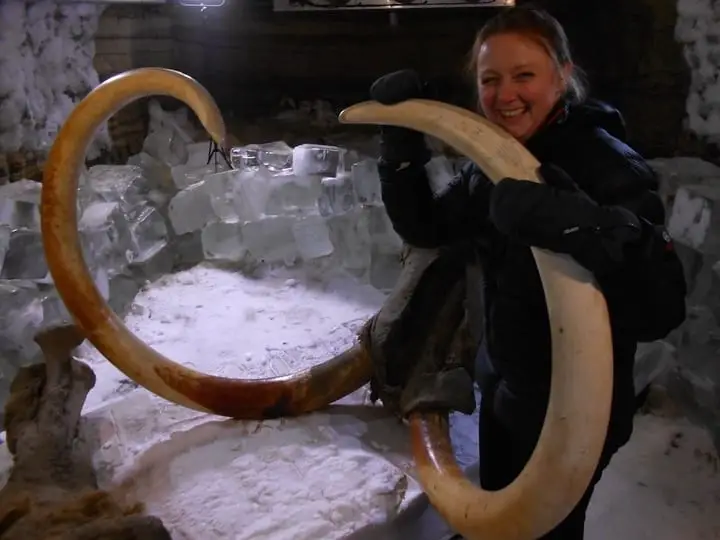
Business Insider
This is one of the only preserved species of mammoth found with an in-tact brain to-date. The specimen is around 39,000 years old, which makes the finding even more spectacular. Sadly, the little mammoth was but a child—somewhere around six to nine years old. This sadly short lifestyle is likely the reason scientists found it in the first place. It likely fell to its death immediately.
26. Building shelter
Another thing these scientists found in the ice patches was some rare wood. It was nowhere to be found, in other words, around the site where it was located. What this means is that the nearest tree from which the wood could’ve come was several miles away—i.e., it was striped, carved, and carried all the way to the site of the ice patch.
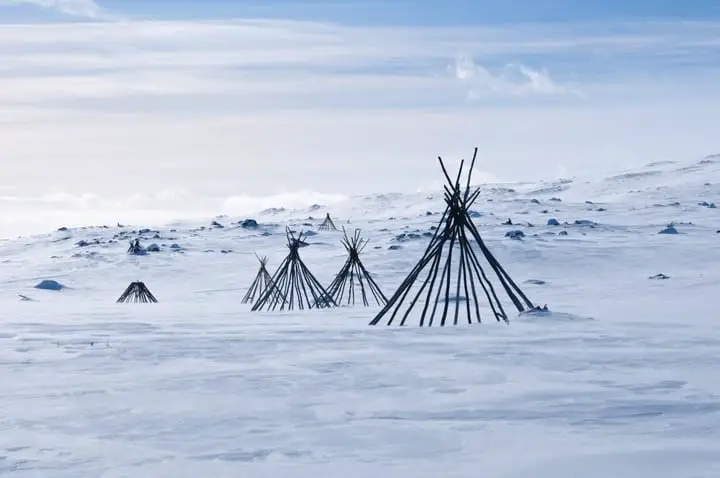
Works That Work
Scientists hypothesize that this wood was used to make shelters while hunting. The hunters, in other words, would manufacture these shelters in the cold while they waited for the caribou or reindeer to make their way to their grazing spots.
27. Birch basket
Scientists also found a well-preserved birch basket in one of these patches. While not mysterious per se, such a finding does reveal some about the people who made the basket and what they used it for. Discovered in 2003, this basket was found to be 650 years-old.
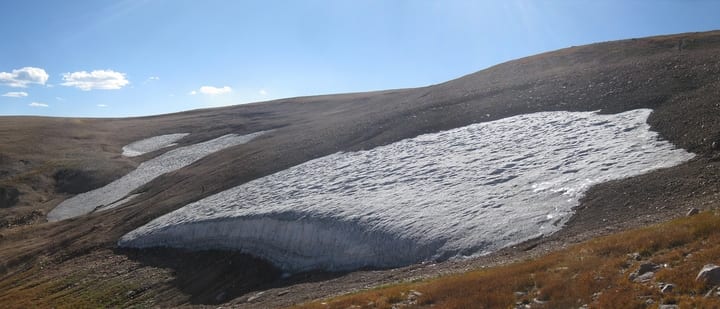
Vision Learning
It had a 2.3 inch high rim with sloped edges. In width, it was about 9.8 inches. What’s interesting about this basket is its weaved pattern, revealing the ingenuity and creativity of the tribe that created it. It was folded into wooden panels, using no plant material. Scientists suspect the basket was used to gather berries.
28. The frozen fox
Sometimes the animals scientists find in ice are more contemporary. And this makes sense—modern animals can freeze in ice just like those that existed back in the day. And this is the case with certain foxes. Their cuteness, in other words, was not enough to prevent them from getting frozen solid in the ice cold waters of the Arctic conditions in which they were found.
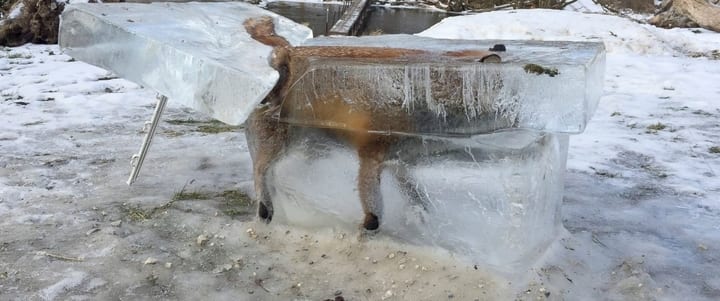
ABC News
This particular critter was found by a hunter in lake in Germany. This particular specimen was not the first found by this hunter. He also claims to have found a wild deer and wild boar prior to this fox. Now, it’s not clear whether this is true, but what we do know is that the fox is to be displayed as an arctic appendage to a German hotel. Let it serve as a warning to the dangers of ice.
29. Gopher stick
Now, this isn’t what it sounds like. It wasn’t, in other words, a stick made of gophers. Wouldn’t that be fun. Instead, it was a stick—a contraption, rather—used to capture gophers. This complex trap worked by looping a snare around a durably carved stick. This stick would then be connected to a strong sting.
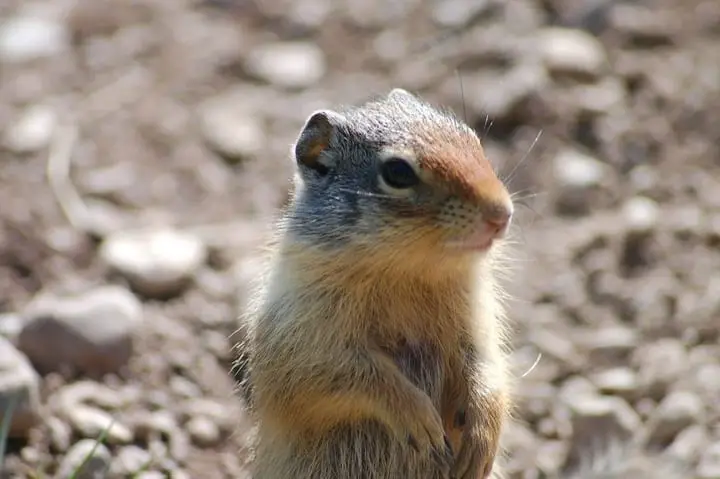
Deviantart
Pressure was built into the contraption, enabling it to snare the gopher when it left its hole. This particular gopher trap that scientists found was about 1,800 years old. Somehow people 1,800 years had figured out how to make such a bizarre and clever trap. I guess we humans can be pretty smart.
30. What we find where
Another interesting find with these ever-receding glaciers and ice patches is a different pattern of activity. At certain mountain ranges, for instance, we find certain objects unique to that region. This enables us to understand what different people were doing when they were in each of these mountain ranges.

Mountain Flying Service
In the ice patches of North America and Norway, for instance, we mostly find tools for hunting. In more frigid regions like the Alps, however, you mostly find materials used for travel. And, as we just learned, the material you find in South America is stuff oriented toward the ritual. Each of these climates, then, was used to a unique end.
31. Alive in ice?
Sometimes the things scientists find in ice aren’t even dead. Sometimes these unholy findings aren’t the result of frozen mishaps, but instead normal changes to the environment. Certain alligators, for instance, can survive in ice for the duration of an entirely frigid winter.
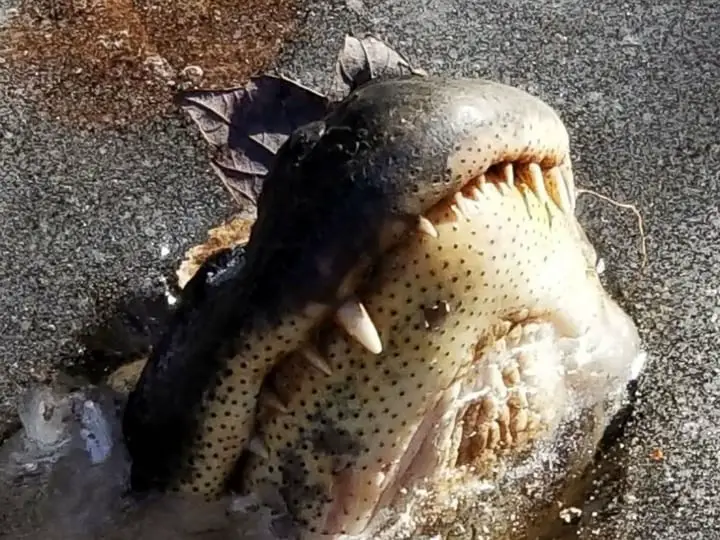
National Post
For whatever reason, their physiology enables them to preserve their internal organs in the ice cold frozen waters. Where you or I might succumb to frost bite and die, then, an alligator might thrive—or at least survive. This frozen state of temporary hibernation let’s them live through these temperamental conditions. If only we could do the same.
32. Problems with warming
While the accelerated melting due to warming is fostering a greater yield for glacial archeologists and the like, it’s also yielding a greater rate of decomposition for the same artifacts. Why is this? Because, as the ice and permafrost melt, they enable the exposed artifacts to undergo the weathering processes they were previously shielded from.
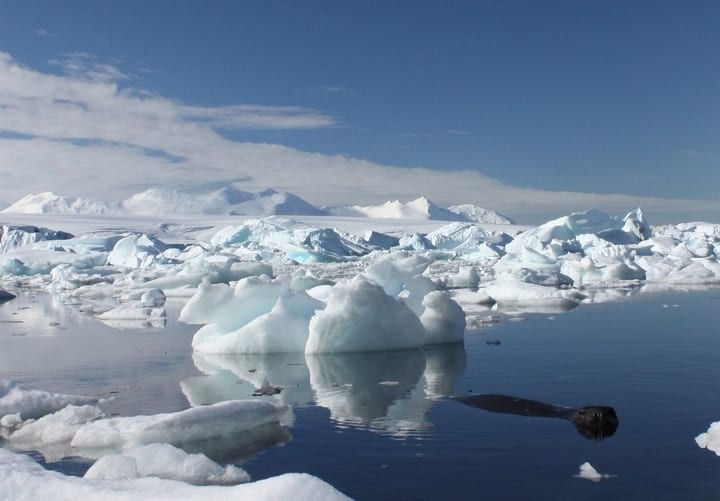
Follow Green Living
When exposed to such factors, the material then can begin to degenerate. Arrowheads, for instance, will become detached from their sheathing within a year of exposure. Likewise, sinew, the material used to wrap objects, will deteriorate at a similar rate. Bone has about 10 years before it withers.
33. Frozen lighthouse
Sometimes the cold gets so bad as to freeze the surrounding architecture. This is actually a common occurrence in Michigan, surprisingly enough. This particular lighthouse is one such entity to succumb to the cold, and oh man did it succumb. Its spiral staircase is clearly frozen, and presumably unmanned.
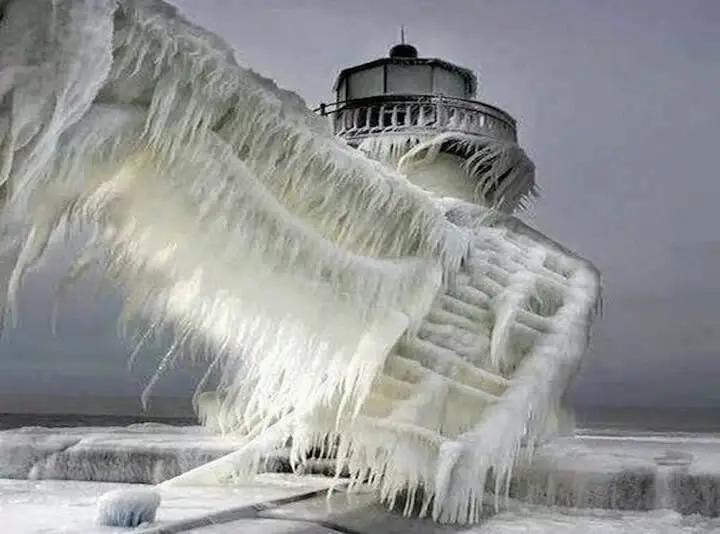
Earth Form
If someone actually had to bear this awful cold, you can assume it wasn’t a good time. That is, unless, they had a few slugs of whiskey. Either way, this mysterious-looking lighthouse has had to deal with some frigid temperatures. And, if it were anything else, it would surely be dead. Thank goodness it’s not alive.
34. Weird things in ice
As the ice patches in the world continue to melt back and the glaciers recede, we will inevitably find weirder and weirder things in the ice. So far, however, we know these things to range from dead people to long extinct animals to archeologically significant objects like baskets and bows.
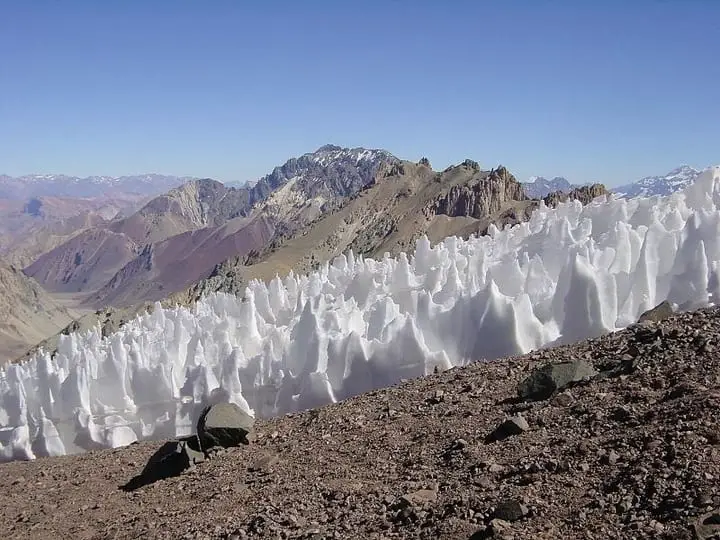
The Science Explorer
Whatever it is we find, the objects will provide perspicacious insight into the people of ice age’s past. And when we get this info, we will be all the wiser. So while the probability of finding alien technology and other weird accoutrements is essentially nonexistent, there is plenty of interesting stuff to look forward to. So brace yourself as these new fields of glacial archaeology find us new and baffling things.